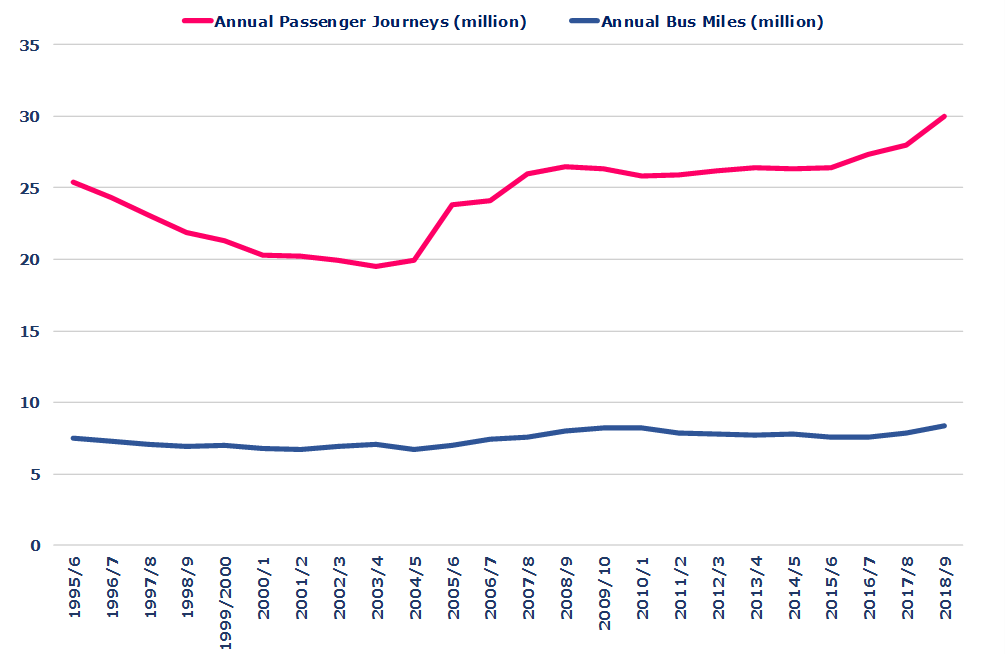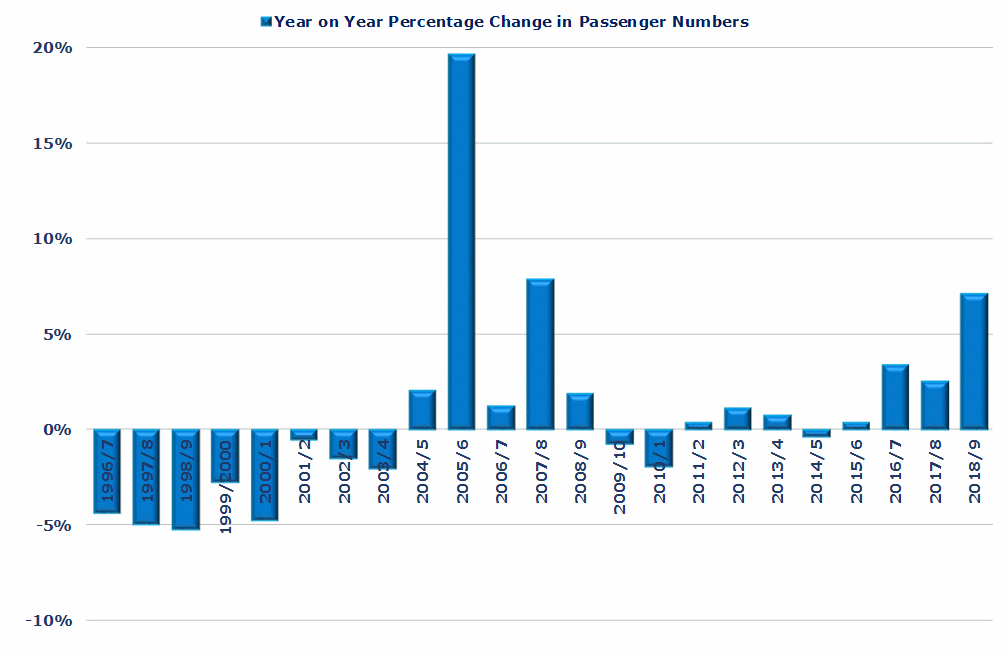
TAS reflection on transforming bus services in Belfast
The running of buses in Belfast is a remarkable part of history and one with which the TAS Partnership has been closely involved for over 20 years. Three decades of civil unrest, of course known as the Troubles, had a huge impact on the shape of the city’s bus network and the vehicles themselves in a way that nowhere in the UK outside Northern Ireland has experienced. TAS Principal Consultant Chris Stockton has advised Translink since 2003 and witnessed the changes in overall approach, service design and vehicle quality that saw the introduction of the Metro network in 2005 and the Glider BRT services in 2018.
Road passenger transport in the Greater Belfast area has originated from two organisations:
- Belfast Corporation Transport (BCT), which began bus operations in 1926, having run trams since 1905; and
- Ulsterbus, formed as the bus operations division of the Ulster Transport Authority (UTA) under the 1948 Transport Act. In 1967 the UTA was replaced by the Northern Ireland Transport Holding Company (NITHCo)
The scale of destruction in the Troubles is often not appreciated – between August 1969 and March 1973 two BCT drivers were killed and 94 buses destroyed. The city council was unable to sustain this scale of loss and BCT became Citybus Services, a sister company of Ulsterbus in April 1973. This did not lessen the number of attacks sustained and Citybus lost two more members of staff and a further 596 buses between 1973 and 2005. Nor were these incidents confined to Belfast as from 1969 to 2005 Ulsterbus lost ten staff and 809 vehicles.
As a result of the constant destruction of buses the fleet became entirely single deck, with double deck buses seen as being much more insecure, and the seats, especially to the rear of the vehicle being made from hard plastic. The buses themselves were outdated with the Bristol RE continuing in production between 1976 and 1982 solely for use in Northern Ireland and with the last examples withdrawn in 2004, long after they had vanished from the fleets of major British operators.
In 1996 Citybus, Ulsterbus and Northern Ireland Railways were brought under the control of the newly established NITHCo subsidiary Translink. Despite this common control certain areas of the Greater Belfast conurbation remained outside the Citybus network and continued to be served by Ulsterbus, typically at much lower frequencies. The Citybus network itself was by no means a coherent entity – major routes commonly had different frequencies in the morning and afternoon, there was often no coordination of services on common corridors and the pattern of services on a Sunday was completely different (and of a much lower frequency and duration) than those on a Monday to Saturday.

Patronage had fallen from 25.4 million annual passenger journeys in 1995/6 to 19.5 million in 2003/4 – a reduction of almost a quarter in only eight years. Translink commissioned TAS to examine the Greater Belfast bus network and to produce recommendations to halt this decline. Our new network, whilst being resource neutral, aligned service frequency with the demand that our analysis suggested was present but had been suppressed by the less than optimal provision, ensured that resources were used as effectively as possible through the coordination of timetables and extended city services to all areas of the conurbation. Some areas historically served by Ulsterbus received much enhanced services (for example Ballybeen went from a half-hourly service to every ten minutes) whilst some over-bussed corridors saw reductions (Castlereagh Road went from eight buses per hour to six)
The new operation was branded Metro and was built around twelve high frequency core corridors. It commenced on 7th February 2005.
The impact was immediate and dramatic with the established pattern of decline replaced by an increase in patronage of 19.6% in the first year. Further increases were recorded over the next three years and 2008/9 annual passenger journeys totalled 26.5 million (1.1 million above the 1995/6 figure). The global recession then hit and passenger numbers felt slightly, averaging 26.2 million a year over the next nine years, but growth returned in 2016/7 and has continued.
 In the next stage of development the rapid transit Glider services were introduced on 3 September 2018 on two corridors (East to West Belfast and Titanic Quarter) using new dedicated vehicles operating over a much enhanced infrastructure installed at a cost of £100 million. In its first 30 weeks of operation Glider services carried a total of 3.7 million passengers and although Metro patronage declined as a result of the replacement of two core corridors by Glider the combined operations registered growth in excess of 7% when compared to 2017/8.
In the next stage of development the rapid transit Glider services were introduced on 3 September 2018 on two corridors (East to West Belfast and Titanic Quarter) using new dedicated vehicles operating over a much enhanced infrastructure installed at a cost of £100 million. In its first 30 weeks of operation Glider services carried a total of 3.7 million passengers and although Metro patronage declined as a result of the replacement of two core corridors by Glider the combined operations registered growth in excess of 7% when compared to 2017/8.
This reversal of fortune demonstrates the level of growth that can be achieved through the delivery of an attractive level of service aligned to the potential demand and supported by substantial investment in infrastructure. Inevitably the success of the initial Glider services will lead to consideration of expansion to other corridors and the challenge will be to ensure that the integration and coordination between Glider and conventional services is maintained at the present level.
As the Greater Belfast conurbation continues to grow existing local authority boundaries become less relevant (indeed a reorganisation took place in 2015 that saw Belfast gain territory from Castlereagh and Lisburn) in determining public transport links and there is potential to expand the Belfast based Metro concept to areas currently outside its remit.


